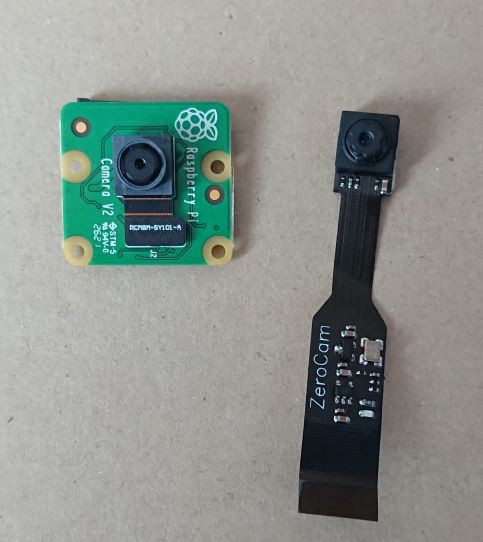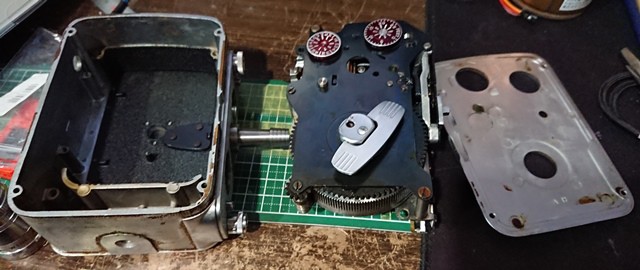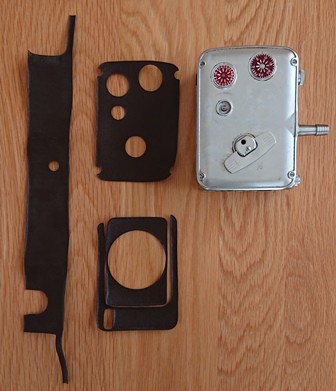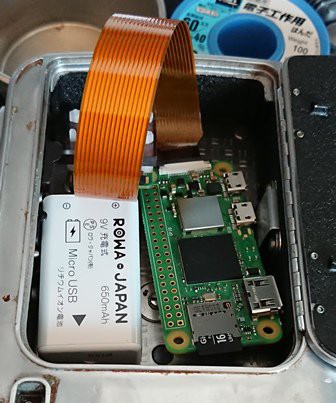-
Shell splitting the image sensor
04/14/2022 at 06:33 • 0 commentsThe lens attached to the OV5647 was removed as it was not needed. The image sensor housing was still in the way and could not be installed in the focal position, so the shell was split.
Since the image sensor shell is welded (probably vibration-welded) to the bottom section, it is necessary to split the welds. The four corners of the shell joint were cut with a nipper blade to break the weld.
There was no damage to the sensor that we were worried about.Since I had a chance to observe the sensor, I took pictures of it under a microscope.
Unfortunately, the magnification was not enough to see the pattern of the sensor.
-
Select image sensor
04/13/2022 at 01:36 • 0 commentsSelect the image sensor to be used in the project. The image sensor must be placed just behind the shutter, but must be a small sensor board due to the limited size of the film chamber.
The maximum width of the space for the sensor should be 20 mm, and less than 15 mm is desirable for optical axis placement.
We originally planned to use a Raspberry Pi Camera V2, but the width of the board is 25 mm and it would not fit.Therefore, we decided to use Arducam's OV5647 camera board with image sensor.
![]()
The width of the sensor part is as small as 8.5 mm, which seems to allow free placement in the film chamber.
The sensor size is 3.68 mm x 2.76 mm; the image size recorded on double-8 film is 4.37 mm x 3.28 mm, so the angle of view drops to about 84%, but this is within acceptable limits.
In actual testing, the Raspberry Pi Camera was able to transfer data at 90 fps at 800 x 600 size, although the image quality was not as good as the IMX219 Raspberry Pi Camera. In this project, we plan to synchronize the shutter timing and shoot at a maximum of 64 fps, so we believe we have confirmed that the performance is sufficient to handle this.
-
Maintenance
04/11/2022 at 02:56 • 0 commentsImmediately after purchase, it was in good shape, but suddenly the shutter stopped working. Since it is an old machine, we enjoy this kind of trouble as well.
Remove the flat-head screws on the four corners of the body to remove the case cover.
The mechanism is held in place by six more screws.
Since the viewfinder lens is also attached to the mechanism, both objective and ocular lenses were removed to take out the mechanism.Since there were no cracks or chips on the parts, I moved the gears by hand and they started to move little by little. Perhaps some deteriorated grease or dust got caught in the gears.
Many failures of old cameras and watches are said to be caused by deteriorating grease. -
Creaning
04/11/2022 at 02:42 • 0 commentsAlthough the camera's performance was not affected, the surface material had deteriorated and was beginning to peel. We will not decide how to finish it, but will clean it first.
The skin material seems to be synthetic leather. It was glued together with glue, but both the glue and the synthetic leather have hardened and deteriorated from the surrounding area and are peeling off. We removed everything and cleaned it.
There is a possibility that we will make a new surface material and reapply it, so we will keep the removed surface material and measure it later.
-
System Considerations
04/11/2022 at 02:08 • 0 commentsNow that the camera has been confirmed, we have come up with an outline of the system.
- The size of the camera should be the same as a film magazine.
- The system should include a camera, microcontroller or SBC for control, recording media, and batteries.
- The battery can be small in capacity, but it should be replaceable.
- A method to detect the shutter timing should be provided.
- The shooting conditions are controlled by the 8mm camera, so the shooting conditions on the system side must be fixed.
- The shooting conditions of the system should emulate the performance of film.
- The frame rate should be 64, which is the maximum value of the camera.
- Movies are shot in conjunction with the shutter release.
- A video file is output every 100 seconds, which is equivalent to one roll of film.
- No preview display.
These are the items we can think of now, but we will add or change them as needed during development.
A Raspberry Pi Zero or Zero2 may be sufficient to meet the specifications.
A Spring-Drive Digital Movie Camera
Digitize a vintage spring-drive 8mm camera. Not for the sake of convenience, but for the enjoyment of video recording.
 AIRPOCKET
AIRPOCKET


